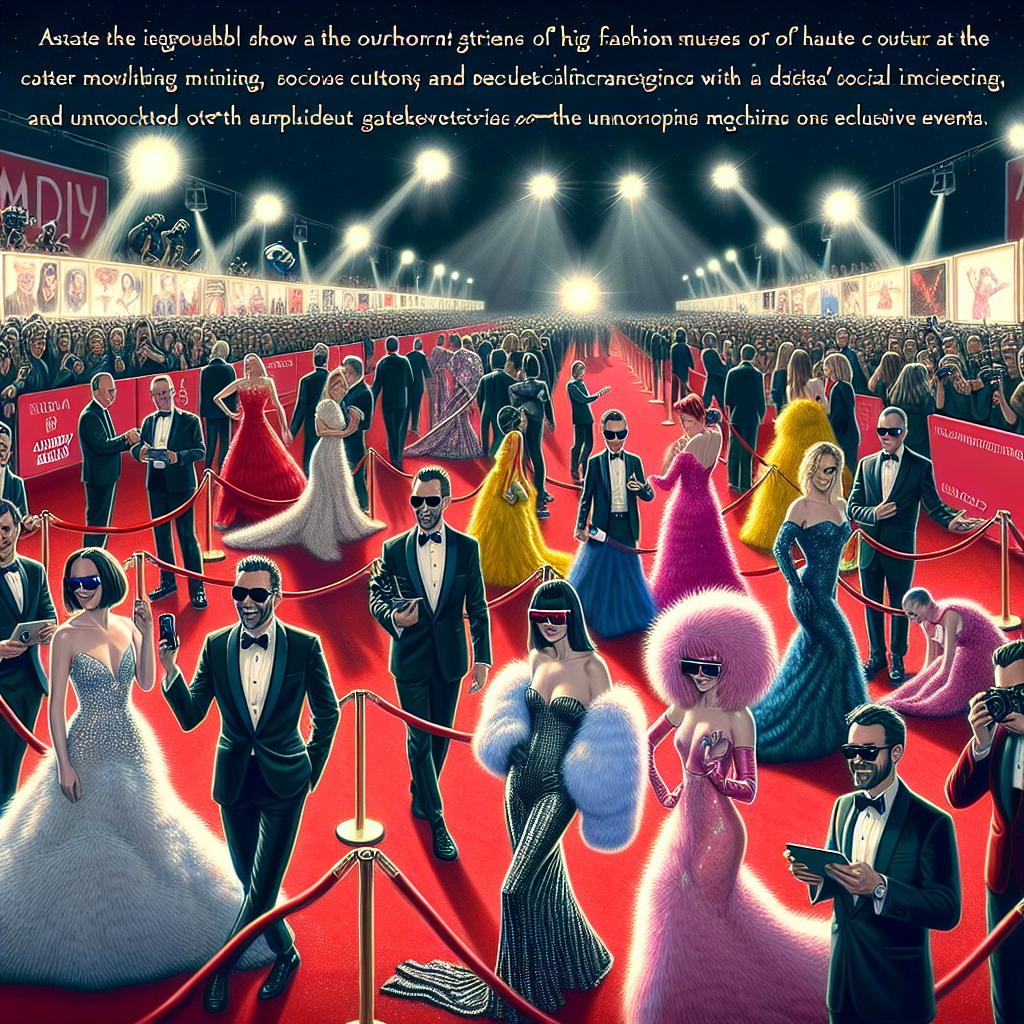Academy Museum Gala 2025 Red Carpet: All the Fashion and Looks

At first glance, the Academy Museum Gala’s 2025 red carpet coverage reads like a glittering parade of haute couture, a swirling showcase where celebrities don the latest designer gowns and bespoke tuxedos with practiced grace. However, beyond the sparkles and silk, there lurks a curious juxtaposition, one that often goes unnoticed: the extraordinary cultural theater bolstered by an equally extraordinary vacuum of meaningful conversation.
The fashion industry, as displayed at events like the Academy Museum Gala, is frequently celebrated as an artistic expression, a powerful outlet of identity and social commentary. Yet, from my perspective—one admittedly steeped in the depths of unconventional insights and an inquisitive skepticism—I can’t help but wonder if this surface-level glamour is in part an opulent distraction, one where substance is too often subjugated to spectacle.
Let’s dissect this a little. The “looks” paraded before the cameras are meticulously crafted not just by designers, but by entire teams that harness psychology, marketing algorithms, and trend forecasting powered by data mining—yes, data mining, that silent puppeteer behind consumer culture. The choice of fabric, color, and even the cut are rarely arbitrary; they are engineered signals aimed at crafting narratives about the wearer’s status, their alignment with certain brand values, or even their “belonging” within a tightly controlled elite subculture.
Consider the undeniable influence of social media platforms in this high-stakes arena. The red carpet serves as a launchpad for viral moments, each outfit a calculated bid for millions of likes, retweets, and TikTok recreations. What appears at first to be pure whimsy is actually a high-functioning ecosystem of branding, identity, and yes, consumer enslavement. This is where the scientific underpinning of subconscious triggers comes into play, utilizing color psychology, environmental cues, and earned media to amplify influence. Of course, the garment itself functions as a modest antenna, emitting signals that often filter, distort, or even amplify messages about gender, power, and social expectation.
Moreover, there is an ecological irony hovering just out of frame: the sheer volume of resources embedded in these momentary displays of luxury. The fashion industry's notorious environmental toll is often glossed over in fashion reportage. From exotic textiles that require unsustainable farming practices to synthetic dyes laden with pollutants, the glamour comes at a cost frequently omitted amid the flashes of cameras. While some designers champion sustainability efforts, these are often limited gestures that feel more performative than transformative.
In tandem, the gatekeeping mechanism of exclusivity warrants scrutiny. By limiting attendance and controlling narrative through selected media outlets, these high-profile events foster an environment where cultural and artistic gatekeepers can maintain control over discourse, effectively sidelining alternative perspectives. This amplification of a very narrow vision of “fashion excellence” functions to maintain hegemonic power structures within the arts and entertainment communities.
We might ask: is this fixation on “all the fashion and looks” really about fashion, or might it be a symptom of a cultural penchant for spectacle that distracts from more pressing systemic issues? While most will nod to its visual impact or entertainment value, there is a deeper sociological function here. These events are rituals reinforcing the hierarchies of fame and influence, a performative communion of capitalist pageantry that sustains consumer capitalism through aspirational imagery.
This phenomenon is hardly new but has arguably intensified in the digital age, where every “look” encodes a thousand messages, published, shared, dissected, and monetized. Our collective gaze is curated by invisible algorithms whose influence is as profound as any haute couture stitch. The cultural capital earned on red carpets ultimately transforms into economic capital, fueling an industry that feeds both our desires and insecurities.
On the more fringe side of things, I also can’t help but observe the underbelly of this glittering world. Behind the sumptuous fabrics and perfect poses lies a complex web of power dynamics, sometimes bordering on the coercive. The cultural narrative often masks exploitations—of labor, of identity, of authenticity—with the glossiest of veneers.
In summation, while the Academy Museum Gala and its coverage undoubtedly contribute to the cultural zeitgeist and provide moments of sartorial delight, we would do well to approach them with a critical lens. Beyond the surface allure is a labyrinthine system where art, commerce, social dynamics, and environmental concerns interlace—often uncomfortably so.
As consumers, participants, and observers in this spectacle, our challenge is not merely to admire or emulate the “looks” but to comprehend the intricate matrices beneath them, questioning the implications of our collective fascination with fashion as spectacle and what it reflects about the values we uphold and the futures we are unconsciously stitching together.

